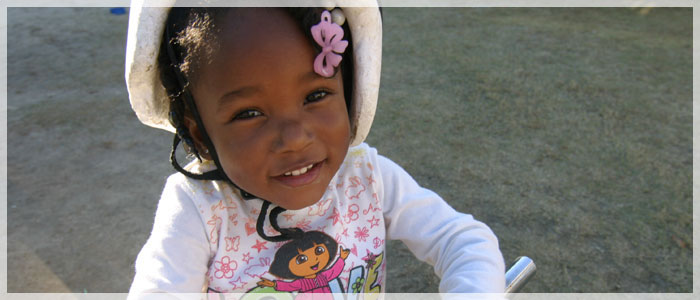
In providing a program for toddlers and twos, our teachers understand that these children learn with their whole bodies. They learn more by doing than by being told. Toddlers discover their world on a physical level, so it is expected that they will prefer walking, climbing, carrying objects, or dropping objects to sitting, picking up toys, or playing only in designated space. These large muscle activities are crucial to toddler development.
In planning for toddlers and twos, our educators are prepared to be flexible and spontaneous. Because they are active explorers, toddlers are eager to try new things and use materials in different ways. Our understanding teachers will go with the cues of the child and view that as learning, extending it even if it isn’t part of the day’s planned curriculum.
Toddlers and twos are working on becoming autonomous. The educated teacher respects this and allows opportunities for the child to be responsible and to make choices. This teacher also understands why certain behaviors must be limited, and sets limits that are fair and consistent. Expectations for behaviors are developmentally appropriate and allow the child to be challenged yet to feel support from the teacher. Consequently, frustration is kept to a minimum and the child’s dignity and self-concept remain intact.
Our teachers, with patience, warmth, and respect, redirect the children to help guide them toward controlling their impulses and behaviors. The teacher draws more attention to a child’s appropriate behavior than to the inappropriate because she understands that toddlers will act in the way that draws the most attention.
Constant testing and expression of opposition are viewed as the child’s development of a healthy sense of self. The teacher accepts this and offers positively worded directions to avoid getting into power struggles. The teacher views herself as a model for how she wants the children to develop. She does this in her verbal interactions, because she understands that toddlers lack the skills to cope with frustrating situations, and might act out in a physical way without her guidance.
The teacher recognizes that routine times are important moments to help children learn about themselves and others. An early childhood educator views play as valuable, and facilitates this so that children stay interested and move from simple to more complex aspects of their play. The classroom includes materials for children to engage in imaginative play, appropriate art experiences for creative exploration, various manipulatives to develop cognitive and physical skills as well as building blocks, music, and books.
The environment allows for the children to choose activities and respects their need for ample time to use and reuse activities, because repeated experiences foster competence. The setting is stimulating and inviting. It offers comfortable spaces for privacy and for interacting in small groups. Children’s art is displayed proudly and respected for what it is. The little ones are encouraged by a knowing adult to care for the belongings and the environment in ways they can handle. The teacher creates and adapts the environment and activities to meet the children’s changing needs from day to day.
- Your child receives a balance of nurturing, playtime and learning throughout the day.
- Your child’s young mind will stay stimulated with monthly themes, providing a rich array of daily activities and a variety of experiences.
- Your child will always have something to do – learning areas focus on dramatic play, creative arts, language development and sensory exploration.
- Your child will gain confidence, self-esteem, and a love of learning.
- You will enjoy regular communication with teachers so that you are informed about your child’s day.



 (803) 419-8858
(803) 419-8858